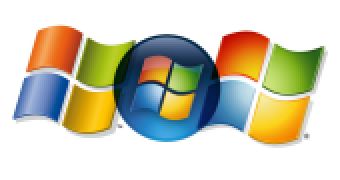When it comes down to allowing Windows XP and Windows Vista users to seamlessly jump to Windows 7, Microsoft default options for in-place upgrades have left some users out in the cold. But while the Redmond-based company is letting customers fend for themselves, Laplink Software comes to compensate the shortcomings of Windows 7 in-place upgrades with PCmover. According to Laplink, the upcoming release of PCmover is capable of allowing end users to perform special "in-place" upgrades from XP to Windows 7. The promise is that customers will not enjoy the option as if it were provided by Microsoft itself.
"Of the 66 Windows 7 upgrade scenarios outlined by Microsoft, only 14 are supported by Windows 7 as an in-place upgrade," explained Jack Wilson, Laplink's Chief Technology Officer. "PCmover supports all of the identified 66 and more. By taking the same logic employed for a new computer migration and applying it to the single computer upgrade process, we are able to provide users with an easy-to-use tool that performs an in-place upgrade."
Microsoft official documentation related to Windows 7 in-place upgrades reveals a number of unsupported upgrade scenarios. Here is the full list, courtesy of the Redmond-based company:
“Upgrades to Windows 7 from the following operating systems are not supported: • Windows 95, Windows 98, Windows Millennium Edition, Windows XP, Windows Vista RTM, Windows Vista Starter, Windows 7 M3, Windows 7 Beta, Windows 7 RC, or Windows 7 IDS • Windows NT Server 4.0, Windows 2000 Server, Windows Server 2003, Windows Server 2008, or Windows Server 2008 R2 • Cross-architecture in-place upgrades (for example, x86 to x64) are not supported. • Cross-language in-place upgrades (for example, en-us to de-de) are not supported. • Cross-SKU upgrades (for example, Windows 7 N to Windows 7 K) are not supported. • Upgrades from Windows Vista to Windows N, Windows K, Windows KN, or Windows E are not supported. • Cross-build type in-place upgrades (for example, fre to chk) are not supported. • Pre-release in-place upgrades across milestones (for example, Windows 7 RC to Windows 7 RTM) are not supported.”
In this regard, the PCmover version tailored to Windows 7 offers end users additional options that Microsoft simply doesn’t. One illustrative example in this regard are what the software giant refers to as cross-architecture in-place upgrades. "The 64-bit issue presents a potentially significant problem," Wilson added. "If you have 32-bit Vista and wish to upgrade to 64-bit Windows 7 in order to address more than four gigabytes of memory, that upgrade is not supported by Microsoft. PCmover properly handles all issues related to 32-bit and 64-bit upgrades and migrations."
Laplink emphasized that PCmover is designed to automatically migrate older Windows releases to Windows 7, while ensuring that everything from settings, to files, folders, applications, but also pictures, videos, music, tax files, Internet favorites, documents, spreadsheets, games, etc. will seamlessly make its way to the “other side” of the upgrade process.
PCmover comes in two flavors, essentially tailored for two consumer segments. Home users will be able to buy PCmover Home, with a price tag of under $40, but Laplink is also offering volume licenses to business customers, with PCmover Enterprise available for less than $10 per migration. PCmover is currently in Beta development stage, a private testing program, and we here at Softpedia are working to take a closer look at the software and will provide an update soon.
"PCmover seems like magic, but what we really do is automate the steps a user would take in setting up a new PC," Wilson added. "First PCmover examines the old PC and determines what exists. Then, on the new PC, the software goes through a process of creating folders, copying files and settings, and emulating the installation of applications. The result is an automated setup process with no need for the user to find old CDs or serial numbers to reinstall applications."

 14 DAY TRIAL //
14 DAY TRIAL //